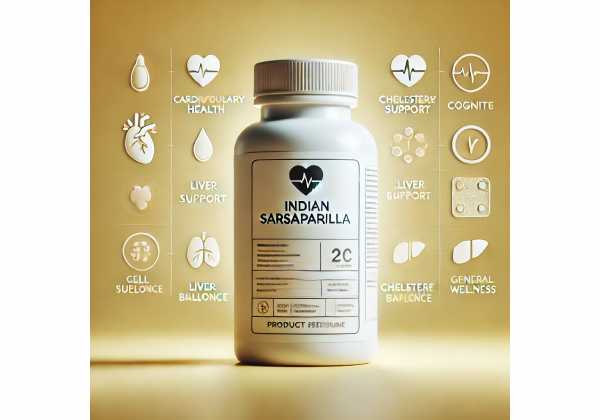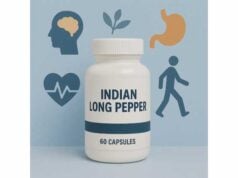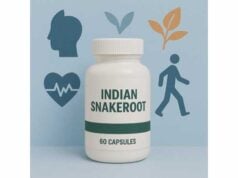
Indian sarsaparilla (Hemidesmus indicus), called Sariva or Anantamul in Ayurveda, is a fragrant climbing shrub whose roots have been used for centuries as a cooling, blood-purifying tonic and skin soother. Modern analyses show a diverse profile of phytochemicals—pregnane glycosides, saponins, phenolics, lignans, and essential oils—that may help modulate inflammation and oxidative stress. Traditional practitioners reach for Indian sarsaparilla to support skin clarity, digestive comfort, and general vitality, while researchers explore its potential in liver protection and immune modulation. Unlike caffeinated stimulants or harsh cleanses, this herb is generally gentle when used at customary doses. That said, “natural” does not mean risk-free: quality varies, and concentrated extracts can interact with medicines or upset sensitive stomachs. This guide translates traditional wisdom and contemporary evidence into practical advice: what it is, how it works, who may benefit, how to use it well, and when to avoid it.
Top Highlights
- Traditionally used for skin health, cooling, and digestive comfort; explored for antioxidant and anti-inflammatory actions.
- Typical adult range: 1–3 g dried root powder daily or 2–4 g in decoction form; start low and assess over 2–3 weeks.
- Quality matters: choose cultivated, verified roots and standardized extracts to reduce adulteration risk.
- Avoid during pregnancy and in people with significant kidney or liver disease without clinician guidance.
Table of Contents
- What is Indian sarsaparilla?
- Does it work? Key benefits
- How to use: preparations and combinations
- Dosage: how much and when
- Mistakes, troubleshooting, and FAQs
- Safety, who should avoid, and interactions
- Evidence: what the research says
What is Indian sarsaparilla?
Indian sarsaparilla (Hemidesmus indicus) is a slender, aromatic climber native to the Indian subcontinent. The root is the medicinal part, prized for its sweet, vanilla-like aroma. In Ayurveda, it is classified as a cooling herb used to balance excess heat and support the skin, urinary tract, and digestion. It appears in numerous classical formulas alongside coriander, fennel, licorice, or sandalwood to round out flavor and effects.
What is inside the root?
Chemical analyses consistently identify pregnane glycosides, saponins, phenolic acids (e.g., 2-hydroxy-4-methoxy benzoic acid often discussed in research), lignans, tannins, and volatile oils. These families of compounds are associated with antioxidant, anti-inflammatory, hepatoprotective, and antimicrobial activities in preclinical models. The diversity of constituents also explains why whole-root preparations can feel gentler than single-molecule extracts.
How it is thought to work (plain language).
- Antioxidant support: scavenging of reactive species and upregulation of endogenous defenses.
- Inflammation modulation: effects on pathways that signal redness, swelling, and discomfort.
- Gastrointestinal soothing: tannins and mucilage-like fractions may calm irritated mucosa.
- Dermatologic support: by dialing down oxidative and inflammatory triggers that can aggravate the skin from the inside out.
Common forms you will see.
- Cut or powdered root: for teas (decoctions) or direct ingestion.
- Standardized extracts: capsules or tinctures listing a ratio or marker compound.
- Syrups and traditional beverages: regional “nannari” syrups and wellness drinks using the root for flavor and cooling qualities.
What it is not.
Indian sarsaparilla is not the same plant as the Smilax sarsaparillas used in other regions. Always check the Latin binomial Hemidesmus indicus to avoid substitutes like Decalepis hamiltonii, which is sometimes mis-sold.
Sustainability and quality.
Wild stands have been pressured in the past. Prefer cultivated sources with documented identity testing (microscopy plus chromatography) and contaminant screening for heavy metals and microbes. Good root is clean, fragrant, and free of musty or chemical odors.
Does it work? Key benefits
1) Skin health from within
In traditional practice, Indian sarsaparilla is used to support clear, comfortable skin in conditions where heat and irritation play a role. While robust human trials are limited, preclinical studies point to antioxidant and anti-inflammatory activities that could rationalize its internal use for skin reactivity. Many clinicians incorporate it in multi-herb plans for people whose skin flares with stress, heat, or digestive triggers. Expect gradual effects over 3–6 weeks, not overnight changes.
2) Gentle digestive and urinary support
Root decoctions have a long history for easing acid-related discomfort, post-meal heaviness, and mild urinary burning. Astringent tannins may protect irritated mucosa, while saponins and phenolics may modulate inflammatory signaling. People commonly describe a cooling, subtly sweet tea that feels settling after spicy or heavy meals.
3) Liver and metabolic resilience (preclinical)
Animal and cell studies suggest the root or its fractions may help buffer oxidative stress and preserve liver enzymes under toxic or inflammatory challenges. Although these data do not translate directly into disease claims, they support traditional use as a tonic during recovery or high-stress periods and justify exploring Indian sarsaparilla as part of a liver-friendly routine (sleep, movement, balanced diet).
4) Immune balance and antimicrobial angles (early evidence)
Extracts show activity against selected bacteria in lab settings and can influence immune pathways important for normal defense. These signals remain preliminary and should not replace standard care for infections, but they hint at why the herb appears in many classical “blood purifiers.”
What improvements do people notice?
- A steadier stomach after rich foods.
- Milder skin reactivity with consistent use.
- A sense of cooling or “settling” in hot weather.
- Less throat or mouth heat after spicy meals.
What it does not do.
It is not a quick detox or a replacement for medical therapy. If you have persistent rashes, systemic symptoms, jaundice, or significant digestive pain, seek a formal evaluation. Herbs work with lifestyle change, not instead of it.
How to use: preparations and combinations
1) Decoction (traditional tea)
- How: Simmer 2–4 g of cut root in 250 ml water on very low heat for 15–20 minutes; strain.
- When: After lunch or in the early evening for a cooling, calming effect.
- Taste and pairing: Naturally sweet and aromatic; pairs well with cardamom or a slice of fresh ginger if you need a warmer balance in cooler months.
2) Powder (churna)
- How: Stir 1–3 g into warm water, warm milk, or a smoothie once daily.
- Tip: Start with ½–1 g for a week to gauge your response, then step up as needed. Powders deliver the whole matrix and are practical for daily routines.
3) Capsules or standardized extract
- How: Follow label directions that equate roughly to 1–3 g root daily. If an extract lists a ratio (e.g., 5:1), 500–600 mg may equal 2.5–3 g of raw herb.
- Why choose extracts? More consistent potency and easier dose tracking; helpful when traveling or if taste is an issue.
4) Syrups and traditional beverages
- How: Dilute 15–30 ml of an Indian sarsaparilla syrup in 150–200 ml chilled water as an occasional summer beverage.
- Note: Syrups may contain added sugar; not ideal for everyday therapeutic use if you are restricting sugars.
Smart combinations (goal-oriented):
- Skin focus: Indian sarsaparilla + neem (short courses) + turmeric from food; maintain fiber and hydration.
- Digestive cooling: Indian sarsaparilla + fennel or coriander seed tea after meals.
- General tonic: Indian sarsaparilla + licorice (short term only if blood pressure is normal) + amla for antioxidant breadth.
Quality checklist before you buy:
- Latin name present (Hemidesmus indicus).
- Country of origin and cultivation status.
- Third-party testing for identity and contaminants.
- Clear serving size in grams or mg; avoid vague “proprietary blends” without amounts.
Storage and shelf life:
Keep sealed, away from heat and moisture. Aroma should remain sweet and pleasant; discard if it smells musty or chemical.
Dosage: how much and when
Adults (general wellness or cooling support)
- Powder: 1–3 g per day in one or two divided servings.
- Decoction: Use 2–4 g of root to prepare a cup; drink 1 cup daily.
- Extracts: Choose products that deliver an amount equivalent to 1–3 g of root daily; begin at the low end for 7–10 days, then reassess.
Timing tips
- For digestive comfort, take after meals.
- For skin support, pick a consistent time daily for at least 3–6 weeks before judging results.
- In hot weather, an afternoon cup often feels best; in cooler months, earlier in the day may suit you better if you tend to feel cool.
Older adults
- Start at ½–1 g daily and increase slowly. Monitor for lightheadedness, GI upset, or changes in urination. Sustained energy and digestion improvements often appear with smaller amounts.
Adolescents
- Use smaller servings proportional to body size (for example, ½ adult amount for teens), and confirm with a clinician if using beyond a few weeks or for specific conditions.
Duration
- Short courses (2–8 weeks): common for seasonal skin aggravations or post-meal heat.
- Longer use: cycle 5 days on / 2 days off or 3 weeks on / 1 week off to reassess benefit and minimize habituation.
When to adjust or stop
- If you notice looser stools, bloating, or a drop in appetite, reduce by 0.5–1 g or move dosing earlier in the day.
- If no benefit after 6 weeks of consistent use at 2–3 g/day, consider alternative strategies.
Mistakes, troubleshooting, and FAQs
Mistake 1: Chasing effects with high doses
More isn’t better. Exceeding 3 g/day of powder or using ultra-concentrated extracts without guidance increases risk of GI upset without reliably increasing benefit.
Mistake 2: Ignoring quality
Adulteration and mislabeling happen. Verify Hemidesmus indicus on the label and prefer suppliers that publish batch testing. If a product tastes oddly bitter or lacks the typical sweet aroma, question its identity.
Mistake 3: Expecting overnight skin changes
Internal skin support is slow. Pair the herb with consistent meals, adequate protein, omega-3-rich foods, and hydration. Track skin and digestive symptoms weekly; look for trend lines, not day-to-day fluctuations.
Mistake 4: Using syrup daily as therapy
Syrups are pleasant but add sugar. For daily use, favor powder, decoction, or capsules.
Troubleshooting quick guide
- Bloating or loose stools: cut the dose by 0.5–1 g, switch to a lighter decoction, or take with food.
- No noticeable effect: verify daily consistency; consider pairing with fennel after meals or amla for broader antioxidant support.
- Taste fatigue: rotate with mild herbs (e.g., coriander seed tea) for a week, then resume.
- Sensitive stomach: start with tea rather than powder; the simmering process can make it gentler.
FAQs
- Is it a stimulant? No. Users typically describe a settling effect, not stimulation.
- Will it help infections? Do not rely on it for active infections; seek medical care.
- Can I take it with coffee or tea? Yes, but if you are sensitive to caffeine, schedule Indian sarsaparilla later to notice its own calming qualities.
- Is it vegan/gluten-free? The root itself is plant-based and naturally gluten-free; check excipients in capsules.
Safety, who should avoid, and interactions
Common, usually mild effects
- Digestive changes: softer stools, mild nausea, a sense of fullness—often dose-related and improved by taking with food.
- Urinary changes: slightly increased urination in some users when taken as a cooling tea.
Less common concerns
- Allergy: rash, itching, or throat irritation—stop and seek care.
- Electrolytes and blood pressure: large volumes of cooling teas plus hot-weather sweating can occasionally lower blood pressure or alter electrolytes; hydrate mindfully.
- Interactions: theoretical modulation of drug-metabolizing enzymes and additive effects with other anti-inflammatory or antioxidant supplements; practical significance is unclear at dietary doses, so monitor when combining.
Who should avoid or seek guidance first
- Pregnancy and lactation: avoid unless a qualified clinician recommends and monitors.
- Significant kidney or liver disease: use only under professional supervision.
- Autoimmune disorders on immunosuppressants: discuss with your specialist before adding any herb with immune-modulating potential.
- Children under 12: do not use beyond culinary amounts without pediatric advice.
Medication notes
- If you take narrow-therapeutic-index drugs (e.g., warfarin, digoxin, lithium), introduce any new herb cautiously and inform your clinician.
- If you use topical or oral retinoids for acne, there is no known direct interaction, but track skin dryness or irritation when changing internal routines.
- For those on diuretics or antihypertensives, monitor for lightheadedness if drinking large volumes of herbal tea in hot weather.
Practical safety tips
- Start low, increase slowly, and aim for the lowest effective dose.
- Choose cultivated, tested products.
- Pause before surgery or major dental work and inform your clinician of all supplements.
- Reevaluate the need every 4–6 weeks; herbs should serve clear goals.
Evidence: what the research says
Phytochemistry and extraction
Modern studies map a broad chemical landscape in Hemidesmus indicus: pregnane glycosides, triterpenes, saponins, lignans, and phenolics including 2-hydroxy-4-methoxy benzoic acid. Method papers optimizing ultrasound-assisted extraction demonstrate how solvent choice and time influence recovery of these bioactives, which helps explain variability among commercial products.
Mechanisms (preclinical focus)
In cell and animal models, extracts:
- Reduce oxidative damage markers and support endogenous enzymes.
- Modulate inflammatory pathways, aligning with traditional “cooling” and soothing uses.
- Show antimicrobial and cytoprotective actions in specific models.
Potential oncology relevance (early laboratory data)
Several in vitro reports note cytotoxic or immunogenic cell death signals in cancer cell lines exposed to standardized extracts or purified constituents. These findings are exploratory; they do not justify self-treatment for cancer but underscore the herb’s research interest.
Human evidence
Contemporary human trials are scarce, and many claims rely on traditional use plus mechanistic studies. Where Indian sarsaparilla appears clinically, it is often within polyherbal decoctions, making it hard to isolate its specific effect. The best grounded, practical uses remain digestive comfort, gentle cooling, and adjunctive skin support, paired with diet and lifestyle measures.
Dose guidance from pharmacopoeias and compendia
Classical and national monographs list 1–3 g of dried root powder per day as a customary adult amount, aligning with everyday practice. Decoction methods typically employ 2–4 g per cup, simmered gently and taken once daily.
Bottom line
Indian sarsaparilla is a low-to-moderate intensity botanical with a favorable tolerability profile at traditional doses. Its strengths are gradual support for skin calm, digestive ease, and a cooling tonic effect. Evidence is stronger for mechanisms than for clinical endpoints, so use it purposefully, track results, and reassess if benefits are not clear within 6 weeks.
References
- A systematic analysis of the ethnopharmacological relevance of an Indian traditional plant, Hemidesmus indicus (L.) R.Br. for the past 10 years 2024 (Systematic Review)
- Optimization of ultrasound-assisted extraction of bioactive chemicals from Hemidesmus indicus (L.) R.Br. 2023
- Indian Sarsaparilla (Hemidesmus indicus) 2020 (Review)
- Hemidesmus indicus induces immunogenic death in human colorectal cancer cells through the activation of ROS-JNK mediated ER stress and autophagy 2018
- THE AYURVEDIC PHARMACOPOEIA OF INDIA 2001 (Pharmacopoeia)
Disclaimer
This article is educational and does not replace personalized medical advice, diagnosis, or treatment. Do not use Indian sarsaparilla to delay or replace professional care for skin disease, digestive pain, jaundice, infection, or any serious condition. If you are pregnant, breastfeeding, managing kidney or liver disease, or taking prescription medicines, speak with a qualified clinician before starting this herb. Stop use and seek medical help if you experience allergic reactions, persistent GI distress, weakness, or concerning symptom changes.
If this guide was helpful, please consider sharing it on Facebook, X (formerly Twitter), or any platform you prefer, and follow us for future updates. Your support helps us continue creating careful, people-first health content.










